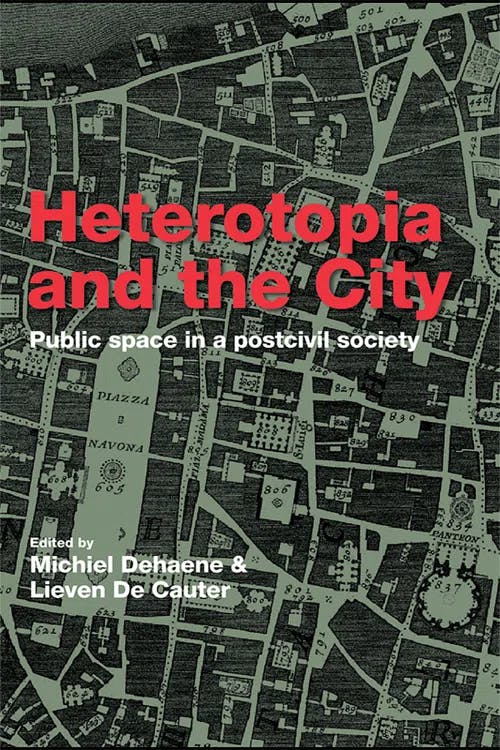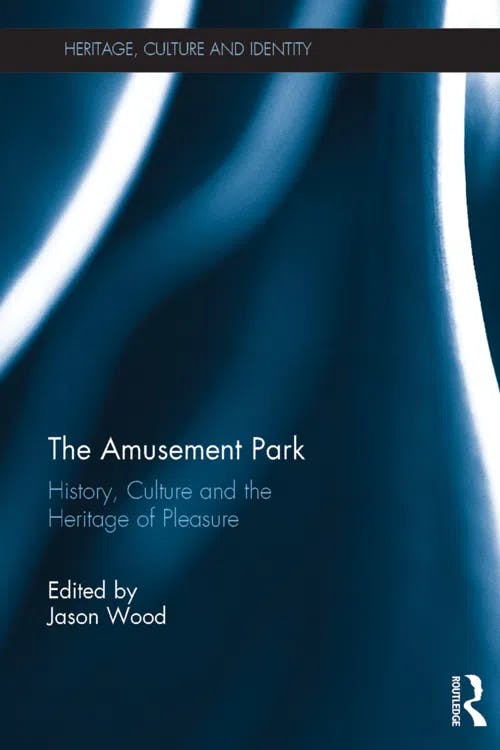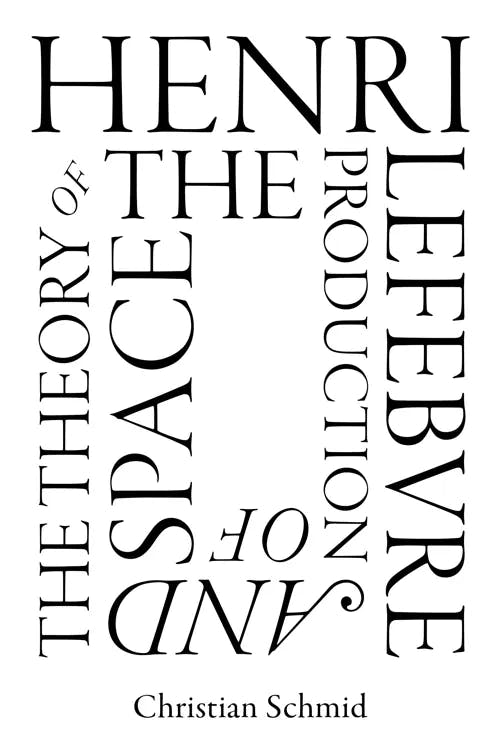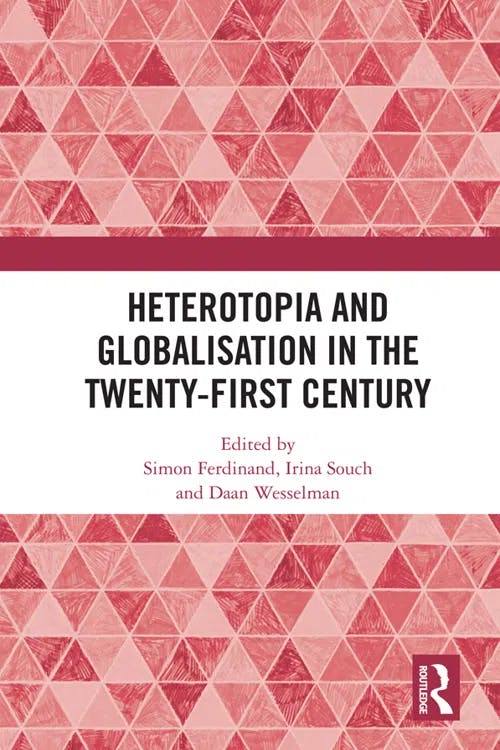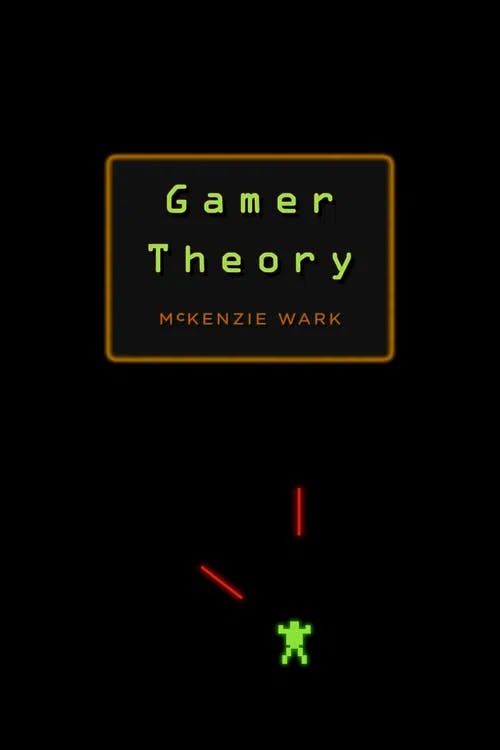What is Heterotopia?
PhD, English Literature (Lancaster University)
Date Published: 20.04.2023,
Last Updated: 19.07.2024
Share this article
From utopia to heterotopia
The term heterotopia is derived from the Greek words “heteros,” meaning other, and “topia,” meaning place. Philosopher Michel Foucault first used this term in the preface to his work The Order of Things (1966, [2018]) to describe all spaces which are characteristically “other,” sites which simultaneously mirror and invert the world around them. Put simply, heterotopias are worlds within worlds which somehow disturb or unsettle what lies outside of them.
Heterotopia can be understood in relation to “utopia,” a term created by Thomas More in his fictional work Utopia (1551, [2014]). The island, Utopia, that More describes is a perfect, self-contained community where everyone works together for the common good and there is no acrimony among inhabitants. A “utopia,” according to Foucault, is a “placeless place” due to its unrealistic ideals; it is imaginary. Foucault states in “Of Other Spaces,” a lecture originally given in 1967 and included in Heterotopia and the City (2008),
Utopias are sites with no real place. They are sites that have a general relation of direct or inverted analogy with the real space of society. They present society itself in a perfected form, or else society turned upside down, but in any case these utopias are fundamentally unreal spaces.
Edited by Michiel Dehaene and Lieven De Cauter
Utopias are sites with no real place. They are sites that have a general relation of direct or inverted analogy with the real space of society. They present society itself in a perfected form, or else society turned upside down, but in any case these utopias are fundamentally unreal spaces.
See our study guide “Utopia vs. Dystopia” for more on the concept of utopia. Heterotopias, on the other hand, have a basis in reality. As Foucault explains,
There are also, probably in every culture, in every civilization, real places — places that do exist and that are formed in the very founding of society — which are something like counter-sites, a kind of effectively enacted utopia in which the real sites, all the other real sites that can be found within the culture, are simultaneously represented, contested, and inverted. Places of this kind are outside of all places, even though it may be possible to indicate their location in reality. (2008)
Heterotopias contain all aspects of society which are not “ideal,” which pose a threat to utopian ideals. For example, crime poses a threat to the harmonious utopia described by More; a heterotopia is created to counteract this: the prison. As such, heterotopias can be described as “counter-sites,” relational settings which juxtapose “normal” or traditional spaces.
Some of the common heterotopias Foucault draws attention to include institutions such as prisons or nursing homes and ambiguous spaces such as gardens, theatres, and cemeteries. As you can see, the definition of what constitutes a heterotopia is quite broad — a point on which Foucault has been routinely criticized. Despite this broad scope, not every space can be considered a heterotopia and Foucault outlines some core criteria which make a space a heterotopia.
Six principles of heterotopia
Foucault helps us to conceptualize heterotopia by outlining six defining principles.
First principle
All cultures across the world produce heterotopias of some form. There are two types of heterotopia: crisis heterotopias and heterotopias of deviation.
Crisis heterotopias constitute the earliest form of heterotopias and could be found in primitive societies. These are often sites which are seen as sacred or privileged and are “reserved for individuals who are, in relation to society and to the human environment in which they live, in a state of crisis” (Foucault, 2008). Foucault’s examples of crisis heterotopias include military schools for young men where their coming of age can occur out of sight. These have been largely replaced by the second type of heterotopia.
Heterotopias of deviation are a way of containing individuals “whose behavior is deviant in relation to the required mean or norm” (Foucault, 2008). Examples of this kind of heterotopia include nursing homes, psychiatric hospitals, and prisons. Here, any behavior which does not constitute the norm can be contained and managed away from the rest of society.
Second principle
The function of the heterotopia is not fixed and can change over time. Foucault writes,
a society, as its history unfolds, can make an existing heterotopia function in a very different fashion; for each heterotopia has a precise and determined function within a society and the same heterotopia can, according to the synchrony of the culture in which it occurs, have one function or another. (2008)
Edited by Michiel Dehaene and Lieven De Cauter
a society, as its history unfolds, can make an existing heterotopia function in a very different fashion; for each heterotopia has a precise and determined function within a society and the same heterotopia can, according to the synchrony of the culture in which it occurs, have one function or another. (2008)
An example of this type of space is the cemetery. Foucault explains that the cemetery in the eighteenth century was in the center of the city, next to the church. In the nineteenth century, cemeteries began to move to the outskirts of the city as citizens began to worry about the disease caused by proximity to the dead. Foucault explains,
The cemeteries then came to constitute, no longer the sacred and immortal heart of the city, but the other city, where each family possesses its dark resting place. (2008)
Heterotopias, therefore, are subject to change based on cultural beliefs, scientific or technological progress, or shifts in morality over time.
Third principle
Heterotopias are able to contain and organize several different types of spaces. In these spaces, we may see combinations of different, even incompatible, types of spaces. Foucault points to the garden as a clear example of this. He writes,
The traditional garden of the Persians was a sacred space that was supposed to bring together inside its rectangle four parts representing the four parts of the world, with a space still more sacred than the others that were like an umbilicus, the navel of the world at its center (the basin and water fountain were there); and all the vegetation of the garden was supposed to come together in this space, in this sort of microcosm. (2008)
In the garden, vegetation and ornaments are combined and arranged to represent spaces outside of the garden. Michael D. Fowler argues that the Japanese garden is a particularly potent example of this heterotopia,
given its proclivity towards the juxtaposition of landform references (such as the inclusion of famous Chinese peaks such as Mt. Horai), ancient and modern epochs and exotic plantings (which may cover references to landscape typologies of India, China and Japan). (2014)
Michael D. Fowler
given its proclivity towards the juxtaposition of landform references (such as the inclusion of famous Chinese peaks such as Mt. Horai), ancient and modern epochs and exotic plantings (which may cover references to landscape typologies of India, China and Japan). (2014)
While the natural aspects of the garden are utopic in a sense, Foucault considers this space heterotopic due to its multiplicity and ability to contain several different spaces, often representing different periods in time.
Fourth principle
Heterotopias are linked to “slices in time” also known as “heterochronies” (Foucault, 2008). There are two types of heterotopia which interrupt our traditional sense of time: heterotopias of accumulation and heterotopias of festivity.
The main examples of heterotopias of accumulation are libraries and museums. As Foucault explains,
the idea of accumulating everything, of establishing a sort of general archive, the will to enclose in one place all times, all epochs, all forms, all tastes, the idea of constituting a place of all times that is itself outside of time and inaccessible to its ravages, the project of organizing in this way a sort of perpetual and indefinite accumulation of time in an immobile place, this whole idea belongs to our modernity. (2008)
In other words, libraries and museums collect objects and information from different time periods, from different places, in a way which protects them from time. By preserving these items, these spaces provide a link between the past and the present, disrupting our traditional sense of time.
Heterotopias of festivity are linked to the temporally transitory. Examples include travelling fairs. As Ian Trowell explains,
The fairground arrives overnight, extends a visit for a few days (or nights), and then leaves with barely a trace: it is thus both temporary and transient. The fairground needs a pre-existing space to occupy, and since the fairground needs to come into the orbit of a wide public, it will occupy a place (rather than an inert space). (“From Battersea to Alton Towers: In search of the Great British theme park” in The Amusement Park: History, Culture and the Heritage of Pleasure, 2017)
Jason Wood
The fairground arrives overnight, extends a visit for a few days (or nights), and then leaves with barely a trace: it is thus both temporary and transient. The fairground needs a pre-existing space to occupy, and since the fairground needs to come into the orbit of a wide public, it will occupy a place (rather than an inert space). (“From Battersea to Alton Towers: In search of the Great British theme park” in The Amusement Park: History, Culture and the Heritage of Pleasure, 2017)
Other periods of festivity can transform a space for a temporary period of time. For example, a Christmas market will change an outdoor space into a place with stalls, bars with seating areas, and even a Santa’s grotto. This is a temporary space, however, and once the season is done, it will revert back to an ordinary pedestrian space.
Fifth principle
Heterotopias require “a system of opening and closing that both isolates them and makes them penetrable” (Foucault, 2008). Heterotopic sites cannot be accessed freely; entry is either compulsory (such as a prison) or subject to completing ritual acts (such as a Muslim hammam). Entrance into the heterotopia is not always straightforward as there are cases, as Foucault explains, when we think we have entered a space, but its true nature is in fact concealed. An example provided by Foucault is certain types of homes on farms in Brazil. In such farmhouses, the guests would enter into a space separate from the family’s living quarters. The guest may feel they have accessed the house, but in actuality, they have only been shown part of it.
Sixth principle
Heterotopias expose and mirror real spaces; they achieve this by either creating a space of illusion or a space of compensation.
The heterotopia of illusion exists to “[expose] every real space, all the sites inside of which human life is partitioned, as still more illusory”(Foucault, 2008). For example, the brothel creates a space of illusion due to the degree of artifice and performance needed to cater to clients). M. Christine Boyer writes that the brothel contests all other spaces “by creating an illusory space that dissipates and denounces bourgeois reality by showing it to be the real illusion” (“The many mirrors of Foucault and their architectural reflections” in Heterotopia and the City, 2008). The brothel in the nineteenth century was the antithesis of middle-class sexual propriety. However, the existence of the brothel, and the fact that the wealthy often patronized it, reveals the artificial nature of bourgeois society.
In the heterotopia of compensation, is “a space that is other, another real space, as perfect, as meticulous, as well arranged as ours is messy, ill constructed, and jumbled” (2008). Examples of this type of heterotopia include the Jesuit colonies in South America. Foucault writes that in this space, the village was meticulously organized and regimented to control the citizens. Such spaces are designed to compensate for a lack of order within society.
Heterotopia beyond Foucault
Foucault’s work on heterotopias has been criticized mainly on the grounds of its broad scope and lack of concrete definitions. Geographer Edward Soja, for example, describes Foucault’s analysis as “frustratingly incomplete, inconsistent, incoherent” (Thirdspace, 1996). Some have argued that this is because Foucault never intended for heterotopia to be a fully realized theory.
Foucault’s concept of heterotopia, while not fully formed in his own work, has yielded an enormous body of research into transgressive, “other” spaces. For example, Soja built on the idea of heterotopia in his theory of “thirdspace,” a term used to describe “lived space,” i.e., how we actually experience a place through social interactions and various other factors. Thirdspace combined the work of Foucault along with other scholars such as Homi K. Bhabha.
Heterotopia has also become a concept built upon Marxist geographers such as Henri Lefebvre. Instead of heterotopia, however, Lefebvre uses the term heterotopy. As Christian Schmid explains,
Lefebvre’s heterotopy is created by internal and external relationships; it does not delimit the “other” and does not dislocate it into specialised spaces, but rather makes it visible and brings it right into the midst of society to make it productive. Difference in Lefebvre’s sense cannot exist in separation; it needs interaction and encounter, sometimes including active confrontation. (2022)
Christian Schmid
Lefebvre’s heterotopy is created by internal and external relationships; it does not delimit the “other” and does not dislocate it into specialised spaces, but rather makes it visible and brings it right into the midst of society to make it productive. Difference in Lefebvre’s sense cannot exist in separation; it needs interaction and encounter, sometimes including active confrontation. (2022)
The idea that heterotopias (or heterotopy) are relational spaces dependent upon interaction is continued by Kevin Hetherington. Hetherington categorizes heterotopias as sites of “alternative ordering” rather than as “sites of resistance, sites of transgression or as marginal spaces” (The Badlands of Modernity, 2002). This allows us to think of heterotopia in terms of its relationship with all other spaces.
Heterotopias in the modern world
The majority of the work on heterotopia, from Foucault and beyond, has tended to focus on the nineteenth and early twentieth centuries. Many of the institutions Foucault originally discussed as heterotopias, such as psychiatric institutions, have transformed and no longer resemble the spaces which Foucault originally discussed. Today, we can see new types of heterotopia being created with improvements in technology, expansion of capitalist spaces, and new digital forms of interaction and socialization.
As Ferdinand, Souch, and Wesselman write in the introduction to their collection Heterotopia and Globalisation in the Twenty-First Century (2020),
today, the colonial plantation has been transcended by agribusiness and soybean dictatorships, the honeymoon trip taken by train or liner by an Airbnb, booked and experienced online in advance. Fairgrounds, which formerly toured the edges of small towns, have been eclipsed by global countercultural festivals, the discrepant fragments of modernist literature by experimental digital films. The prison has morphed into immersive role-playing games set in former prisons, the natural sublime of the great national parks into the new ecological particularism of contemporary nature writing or the contested shorelines of climate and migration.
Edited by Simon Ferdinand, Irina Souch, and Daan Wesselman
today, the colonial plantation has been transcended by agribusiness and soybean dictatorships, the honeymoon trip taken by train or liner by an Airbnb, booked and experienced online in advance. Fairgrounds, which formerly toured the edges of small towns, have been eclipsed by global countercultural festivals, the discrepant fragments of modernist literature by experimental digital films. The prison has morphed into immersive role-playing games set in former prisons, the natural sublime of the great national parks into the new ecological particularism of contemporary nature writing or the contested shorelines of climate and migration.
Of the examples given of these new heterotopias, we will explore the discussion of immersive prison-based roleplay games. Hanneke Stuit expands upon Foucault’s discussion of the prison as a heterotopia of deviance by applying this to the real-life gaming experience, Prison Escape. As Stuit explains, the facility is housed in a former penitentiary in Breda, the Netherlands, and allows players to experience prison life alongside fellow “prisoners” and actors. This space acts as a heterotopia on multiple levels; it is “frozen in time” as participants can imagine what the prison used to look like, it provides access to a penitentiary which would ordinarily be closed off to the public, and “the game’s fixed three-hour duration, repeatable nature, and fixed location [...] reflects the fleeting atmosphere of the festival” (Stuit, “The prison as playground: Global scripts and heterotopic vertigo in Prison Escape” in Heterotopia and Globalisation in the Twenty-First Century, 2020).
Stuit’s analysis can be further applied to wider live-action roleplaying sessions which offer a glimpse into a historic past (real or imagined) and have specific rules around entrance and access. Stuit’s example constitutes a type of dark tourism, whereby people can pay to access morbid spaces typically associated with death or tragedy.
There have also been discussions of how digital technology and social media can impact our understanding of heterotopia. Hye Jean Chung has coined the term “media heterotopias” to describe “a mode of perception that recognizes and describes new hybrid forms, that is, digital composites of multiple layers that contain material residues of globally dispersed film production” (Media Heterotopias, 2018).
Chung goes on to explain how cinema can be considered a heterotopia:
the subject's spatial imagination is developed and enriched by the experience of watching films that not only provide images of other places but also create ways of seeing and sensing space through a “corporeal geography.” The sense of mobility is generated by the spectator’s engagement with this heterotopic space of cinema, which alludes to virtual realms that enable us to envision (and even actualize) the emancipatory powers of imagination. (2018)
Hye Jean Chung
the subject's spatial imagination is developed and enriched by the experience of watching films that not only provide images of other places but also create ways of seeing and sensing space through a “corporeal geography.” The sense of mobility is generated by the spectator’s engagement with this heterotopic space of cinema, which alludes to virtual realms that enable us to envision (and even actualize) the emancipatory powers of imagination. (2018)
Chung explains this process by using the example of the science fiction film The Martian (Scott, 2015). In this film, “real and virtual geographies [are] created by various visual technologies” including practical and computer-generated visual effects. This layering and combination of different spaces (real and CGI) is a new form of heterotopia, designed to fully immerse the viewer.
We can further see heterotopias in video game spaces as McKenzie Wark outlines in Gamer Theory (2007). Here, Wark comments on how online video game spaces are heterotopic in nature:
There are heterotopias of bare necessity: prisons, hospitals, schools. These need not concern gamer theory much. More interesting are the heterotopias of useless luxury: galleries, arenas, sports domes [...]. Heterotopias of luxury, of a strictly artificial necessity, contain subdivisions of play and game, existing within their allotted times and spaces, which are in turn subdivided. The space of play contains separate worlds of literature, art, theater, cinema, even spaces for sexual play.
McKenzie Wark
There are heterotopias of bare necessity: prisons, hospitals, schools. These need not concern gamer theory much. More interesting are the heterotopias of useless luxury: galleries, arenas, sports domes [...]. Heterotopias of luxury, of a strictly artificial necessity, contain subdivisions of play and game, existing within their allotted times and spaces, which are in turn subdivided. The space of play contains separate worlds of literature, art, theater, cinema, even spaces for sexual play.
These artificial necessities in gaming spaces include the art, graphics, and even luxury items gamers can purchase to enhance their experience, such as character customization. Video games act as heterotopias as they both represent and counter the real world we live in. Such gaming spaces exist within our world (through phones, consoles, etc.), but they are constructed realities.
Foucault’s concept of heterotopia has influenced and shaped the way we think about space in our modern landscape. In particular, we can see how these spaces which both contest and mirror our society can be applied to digital, abstract spaces in the twenty-first century. We can see how the “metaverse,” which allows us to access the internet via virtual reality (VR) and augmented reality (AR) headsets, may invite new discussions of heterotopia. For example, the spaces we enter in the metaverse, via an avatar, may constitute a form of heterotopia as such spaces reflect and contest our own reality. Even more established forms of social media, such as Facebook, Instagram, and TikTok, constitute a type of heterotopia in that they capture fleeting and transitional moments in time, whilst also archiving and storing endless data, compiling a history of human interactions. Foucault’s definition of heterotopia, while criticized for its breadth and lack of specificity, has proven incredibly fruitful in helping us articulate these new and emerging spaces.
Further reading on Perlego
Miller, J. (2015) The Globalization of Space: Foucault and Heterotopia. Routledge. Available at: https://www.perlego.com/book/1643259/the-globalization-of-space-foucault-and-heterotopia-pdf
MIhajlović, J. (2018) Contemporary Heterotopias: Themed Spaces as Nuclei of Culture. Lambert Academic Publishing. Available at: https://www.perlego.com/book/3388073/contemporary-heterotopias-themed-spaces-as-nuclei-of-culture-pdf
White, R. G., A. Faramelli, and D. Hancock (eds). (2018) Spaces of Crisis and Critique: Heterotopias Beyond Foucault. Bloomsbury Academic. Available at: https://www.perlego.com/book/804825/spaces-of-crisis-and-critique-heterotopias-beyond-foucault-pdf
Bibliography
Chung, H. J. (2018) Media Heterotopias: Digital Effects and Material Labor in Global Film Production. Duke University Press. Available at: https://www.perlego.com/book/1466177/media-heterotopias-digital-effects-and-material-labor-in-global-film-production-pdf
Dehaene, M. and L. De Cauter. (2008) Heterotopia and the City: Public Space in a Postcivil Society. Routledge. Available at: https://www.perlego.com/book/1695933/heterotopia-and-the-city-public-space-in-a-postcivil-society-pdf
Ferdinand, S., Souch, I. and D. Wesselman. (2020) Heterotopia and Globalisation in the Twenty-First Century. Routledge. Available at: https://www.perlego.com/book/1476495/heterotopia-and-globalisation-in-the-twentyfirst-century-pdf
Foucault, M. (1966, [2018]) The Order of Things. Routledge. Available at: https://www.perlego.com/book/1561151/the-order-of-things-pdf
Foucault, M. (2008) “Of Other Spaces,” in De Cauter, L. and Dehaene, M. (eds.), Heterotopia and the City: Public Space in a Postcivil Society. Routledge. Available at: https://www.perlego.com/book/1695933/heterotopia-and-the-city-public-space-in-a-postcivil-society-pdf
Fowler, M. D. (2014) Sound Worlds of Japanese Gardens: An Interdisciplinary Approach to Spatial Thinking. transcript Verlag. Available at: https://www.perlego.com/book/1464324/sound-worlds-of-japanese-gardens-an-interdisciplinary-approach-to-spatial-thinking-pdf
Hetherington, K. (2002) The Badlands of Modernity: Heterotopia and Social Ordering. Routledge. Available at: https://www.perlego.com/book/1618703/the-badlands-of-modernity-heterotopia-and-social-ordering-pdf
Schmid, C. (2022) Henri Lefebvre and the Theory of the Production of Space. Verso. Available at: https://www.perlego.com/book/3765677/henri-lefebvre-and-the-theory-of-the-production-of-space-pdf
The Martian (2015) Directed by Ridley Scott. Available at: Disney+.
Trowell, I. (2017) “From Battersea to Alton Towers: In search of the Great British theme park” in Wood, J. (ed.), The Amusement Park: History, Culture and the Heritage of Pleasure. Routledge. Available at: https://www.perlego.com/book/1472635/the-amusement-park-history-culture-and-the-heritage-of-pleasure-pdf
Wark, M. (2007) Gamer Theory. Harvard University Press. Available at: https://www.perlego.com/book/1147891/gamer-theory-pdf
PhD, English Literature (Lancaster University)
Sophie Raine has a PhD from Lancaster University. Her work focuses on penny dreadfuls and urban spaces. Her previous publications have been featured in VPFA (2019; 2022) and the Palgrave Handbook for Steam Age Gothic (2021) and her co-edited collection Penny Dreadfuls and the Gothic was released in 2023 with University of Wales Press.

